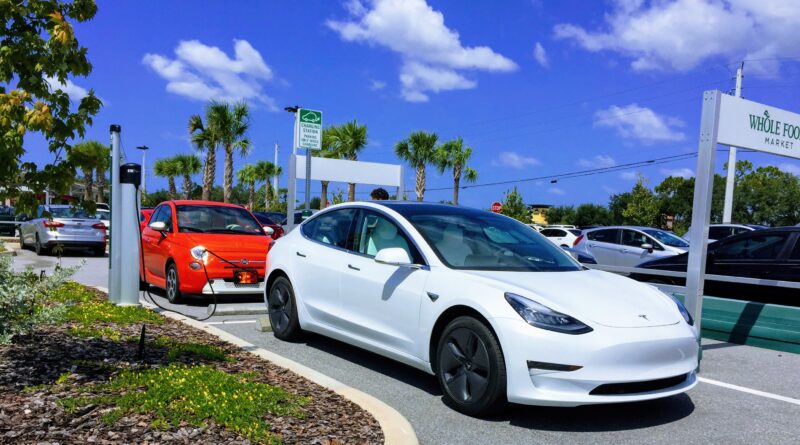From the “
We’ve been telling you this!” department and the “
Yes, please!” division, Consumer Reports has a results of a new study out that brings light to the fact that we need
a lot more charging stations at retailers across the US.
The fact is, there are three core places where EV charging stations are particularly useful: at home, at work, and at places where people regularly (one or twice a week, at least) spend a decent chunk of time. If you have home or workplace charging, the third one probably isn’t needed. However, if someone doesn’t have home or workplace charging, the third one is critical. And where do people spend a chunk of time once or twice a week? Big retail stores where they get groceries and other things, like Target, Walmart, and Cosco. Of course, other retail stores could also help to fill in the gaps for times when one of the other options isn’t available.
Unfortunately, there are few charging stations at retailers across the country right now. “This report, based on CR’s first-of-its-kind investigation, examined which retailers are leading and which are lagging when it comes to EV charging. The findings are bleak:
Only about 1 percent of the 270,000 retail locations controlled by the 75 retail and fast-food companies we reviewed offer any EV charging,”
Consumer Reports writes. “Big box retailers have the highest proportion of store locations with charging infrastructure, but it’s still very low. On average, EV charging is available at 1 out of every 14 big box store locations; 1 out of every 15 grocery stores; and 1 out of every 40 department stores.”
They highlight that this is somewhat of a forgotten portion of the EV charging landscape. And, unfortunately, the story gets even worse when it comes to other types of retailers. “All other retail sectors trail these numbers by a wide margin. In short,
these results show that there is no retail category where a driver can be confident that an EV charger will be available.” Here are more facts from the Consumer Reports investigation:
- Only one retailer, IKEA, offers EV charging at nearly 100 percent of its U.S. locations.
- Among big box retailers, including Target and Walmart, no company except Ikea currently offers EV charging at more than 10 percent of its locations.
- In the grocery sector, Amazon and some regional supermarkets including Big Y, Hy-Vee, Meijer, and Raley’s offer EV charging at over 10 percent of their locations. Trader Joe’s and Aldi are lagging behind, with a mere 10 locations in total.
- Wawa and Sheetz are leading the convenience store category with more than 10 percent of locations providing EV charging. Larger chains like 7-Eleven and Circle K claim they are developing internal charging networks, but neither currently provides charging at more than 1 percent of store locations.
- While Kohl’s has made significant EV infrastructure investments in its department stores, Ross, Dillard’s, JCPenney, and TJX Co. combined have installed charging at fewer than 10 locations.
- The drugstore category shows a split between Walgreens and CVS. While Walgreens is making progress, CVS has made no public statements regarding whether it will expand EV charging beyond its current offering at fewer than 10 store locations.
- Discount stores like Dollar General, Dollar Tree, and Five Below have effectively made no investments in EV charging despite the critical role these companies, with their nearly 40,000 store locations, could play in improving access to rural and under-resourced communities.
- No leading fast-food company reviewed by CR has made significant progress. No company offers EV charging at more than 1 percent of store locations.
It’s really not a very uplifting report. But it’s also not news to anyone with an electric car. We can see how limited EV charging infrastructure is at the places where we shop.
Aside from the obvious benefit of having a place to charge where you shop, there’s also a visibility factor that’s important here. Most people who don’t own an electric car wonder about charging one if they got one. It’s hard for many people to figure out right off the bat that if they have home charging, not much else is needed. If they saw EV chargers at the places they routinely shop, that would at least show them that they could charge there while shopping. Additionally, it may make them think about going electric on a regular basis, which could be a big factor in increasing EV adoption.
Of course, for those thinking about going electric who
don’t have home or workplace charging, seeing chargers at retail locations they frequent could give them the confidence they need to really consider it and buy an electric car. And that’s for good reason — this could be a difference maker for them. From personal experience, I lived with electric cars for a couple years without home or workplace charging, but I had charging at the stores I most frequented, so I found it convenient to own an EV.
The big carrot that should get more retailers to get into the game and include charging stations at their properties is that doing so increases purchases! “Following the installation of a nearby fast charger, retailers see an increase in both foot traffic (an average of 4 percent) and revenue (5 percent) as consumers shop and run errands while they charge their vehicle.” Naturally, if you have an EV and have a choice between two similar retailers and one includes chargers and one doesn’t, you’re more likely to go to the retailer that includes chargers. Furthermore, if you need to charge for a certain amount of time (45 minutes, for example) and that is longer than the time you’d normally need for charging, there’s a decent chance you’ll take a little longer in the store and buy a little more. Personally, where I do most of my charging is a Tesla Supercharger behind a grocery store, and the charging is a bit quicker than I’d prefer, so I actually go through my shopping a bit faster than I’d prefer much of the time. But it’s more likely that someone would have time to spare while charging and then spend more money in the store.





